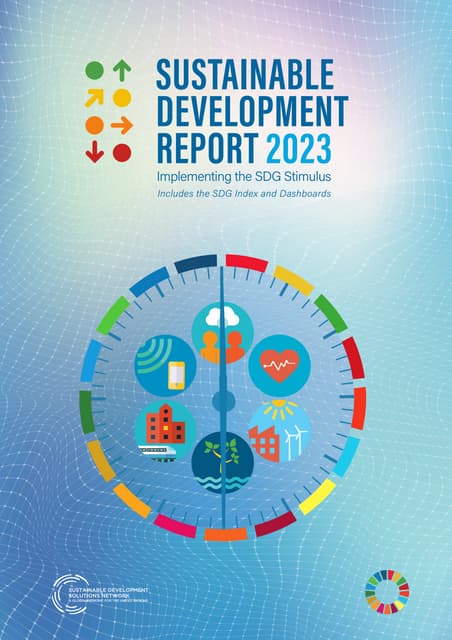RESOURCES
OCHA PRE-DISASTER INDICATORS DASHBOARD
Barangay Level Hazard Assessment & Mapping Tool
Multi‑Hazard Assessment and Mapping Tool
IMF's Climate Change Dashboard
PROCESS MANUAL FOR RESILIENT AND SUSTAINABLE LIVELIHOODS AND INTERVENTIONS
This Manual has four (4) Interrelated Chapters:
I. Introduction to Livelihoods and MSMEs.
II. Profiling and Calculating Livelihood Risks and Hazards; III. Livelihood Assets and Market Assessment; and
IV. Livelihood Resilience Development and Management.
Chapter I presents the fundamental concepts and frameworks essential for grasping the dynamics of livelihoods and MSMEs, highlighting the need to merge these technical concepts as tools for mitigating the vulnerabilities faced by urban communities. Chapters II through IV offer detailed frameworks, principles, and methodologies for the enhancement and promotion of livelihoods as enterprises, as well as for the implementation of livelihood interventions that extend beyond mere integration into local governance processes.






CURATED RESOURCES
RAPID ASSESSMENT FOR HUMANITARIAN ASSISTANCE
ISO 31000 – Risk Management Guidelines
- Overview: This internationally recognized standard provides principles, frameworks, and processes for managing risk in organizations.
- Usefulness: ISO 31000 outlines systematic approaches for identifying, assessing, and mitigating risks, helping organizations establish a structured approach to risk management.
- Resource: ISO 31000
COSO ERM – Enterprise Risk Management Framework
 Overview: The COSO ERM framework emphasizes integrating risk management with strategy and performance.
Overview: The COSO ERM framework emphasizes integrating risk management with strategy and performance.
Usefulness: This framework is especially useful for organizations seeking a holistic approach to risk management that aligns with organizational goals and improves strategic decision-making.
Resource: COSO ERM Framework
3. UNDRR Disaster Resilience Scorecard for Cities
 Overview: This tool, developed by the United Nations Office for Disaster Risk Reduction, offers a comprehensive framework for cities and organizations to assess resilience and risk in urban environments.
Overview: This tool, developed by the United Nations Office for Disaster Risk Reduction, offers a comprehensive framework for cities and organizations to assess resilience and risk in urban environments.
Usefulness: It can help educational and administrative institutions assess vulnerabilities, improve resilience, and respond more effectively to potential disasters.
Resource: UNDRR City Resilience Scorecard
The National Institute of Standards and Technology (NIST) Cybersecurity Framework

Overview: NIST’s framework is essential for managing and reducing cybersecurity risks.
Usefulness: It provides specific guidance for educational institutions handling sensitive data, such as personal and financial information, and helps build resilience against cyber threats.
Resource: NIST Cybersecurity Framework
5. World Bank's Resilience Rating System
Overview:This system supports organizations in measuring resilience in development projects, especially for infrastructure.
Usefulness: Higher education institutions and finance units involved in infrastructure projects can use this resource to strengthen project resilience against natural disasters and climate risks.
Resource: World Bank Resilience Rating System
OECD's Resilience Systems Analysis Toolkit
Overview: The Organization for Economic Co-operation and Development (OECD) provides tools for resilience assessment and scenario planning.
Usefulness: This toolkit helps organizations identify vulnerabilities, plan responses, and strengthen system-wide resilience.
Resource: OECD Resilience Systems Analysis Toolkit
HEFCE Risk Management in Higher Education Institutions
Overview: This guide, created by the Higher Education Funding Council for England, focuses specifically on managing risks within higher education.
Usefulness: Useful for finance and administrative units in educational institutions, it provides case studies and best practices for addressing sector-specific risks.
Resource: HEFCE
Institute of Risk Management (IRM) Training and Certification
Overview: IRM offers risk management training, certification programs, and practical resources.
Usefulness: Certification and resources from IRM help develop advanced risk management skills, suitable for professionals in any sector.
Resource: IRM Courses and Certifications



BARANGAY LEVEL SINGLE HAZARD QUICK ASSESSMENT TOOL
A web application that can help generate maps and analytics using hazards, exposure, and location data from the GeoRiskPH database. Visualize assessments in the form of maps, charts, and graphs to better understand the scope and prepare for natural hazards, such as tsunami, earthquake, landslide, and flood, in your area.


Stay Connected!
Don't miss out on the latest updates and exclusive content tailored just for you. Drop your email below. We promise to respect your inbox and keep you informed, not overwhelmed.
Let's stay connected.
